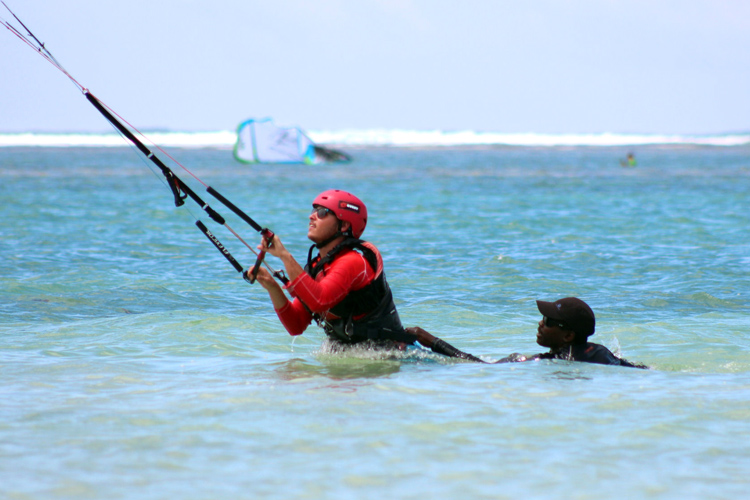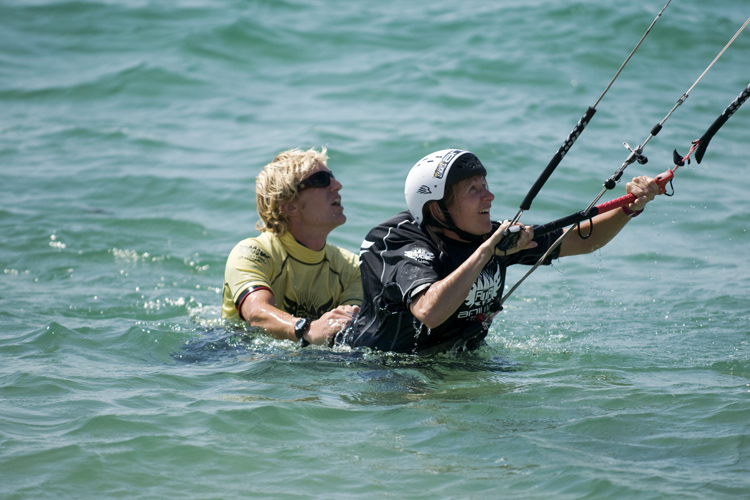Body dragging is one of the most important techniques you should master in kiteboarding. It will allow you to recover the board, and in extreme cases, it might save your life, too.
Kiteboarding beginners must learn how to body drag themselves back to the beach if an emergency occurs.
In the early rides, it's easy to lose a board.
A wipeout, a rip current, or a crash might compromise your board, so you must be ready to get back to terra firma.
There are body-dragging techniques for both upwind and downwind situations.
Depending on your kite control skills, you can also activate slow or fast body drag modes.
You will effectively drag your body across the water by making smooth sinusoidal lines with your kites.
The more radical the figure eight, the faster you'll move. Remember that the kite should never fly to the opposite wind window.
It is also important to note that body dragging can be quite tiring, especially if done for long periods of time.
So, if your arms need a rest, get the kite at 12 o'clock and relax while floating on your back.
In all cases - slow and fast body dragging - try to keep your hands well centered on the kite bar to avoid miss-steering the kite in choppy waters.

Upwind Body Dragging 101
Upwind body dragging is a key technique for retrieving kiteboards. It can also be used to reach the shore in upwind sailing conditions.
Make sure to power the kite slightly to keep it at 45 degrees and as stationary as possible.
- Take your front hand off the bar and fly the kite one-handed;
- Reach out with your front arm and aim excessively for your upwind target;
- Stretch as much as you can and get rigid like a piece of wood;
- Keep your legs straight and use them as a rudder for your direction;
- Maintain a relatively low speed;
Downwind Body Dragging 101
Downwind body dragging is slightly easier, but you should never underestimate the power of the wind.
Sudden gusts can rapidly blow your hands off the kite bar. Kite steering in a downwind is relatively effortless.
- Lay on your chest with both hands on the bar;
- Keep both hands outside on the bar;
- Use your arms only to steer;
- Keep your body stable despite the strong steering pushes;
Practice your first body dragging experimentations when the winds are light, and make sure you never ride a kite alone.
For more kite tricks, get the "Kiteboarding Tricktionary."
